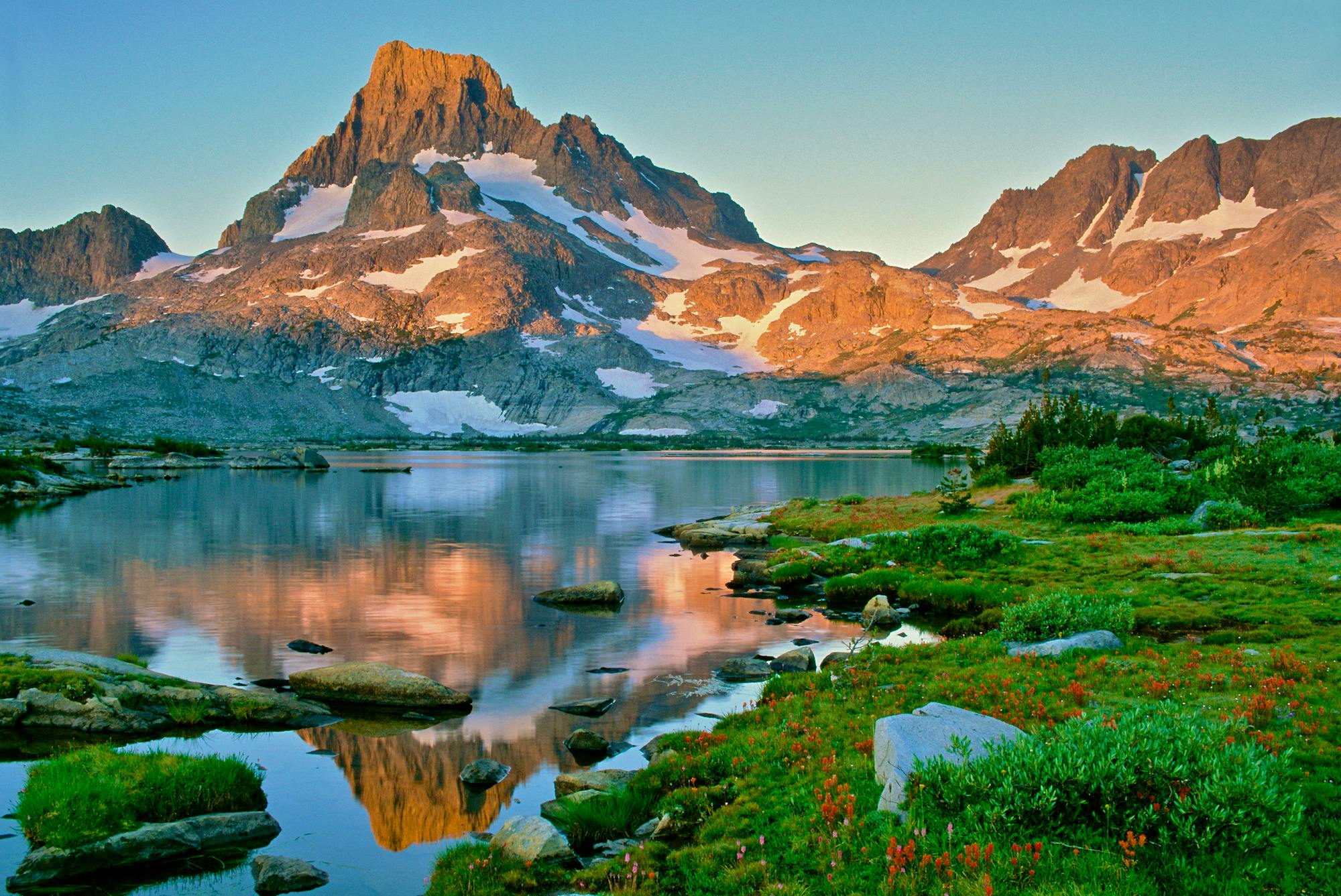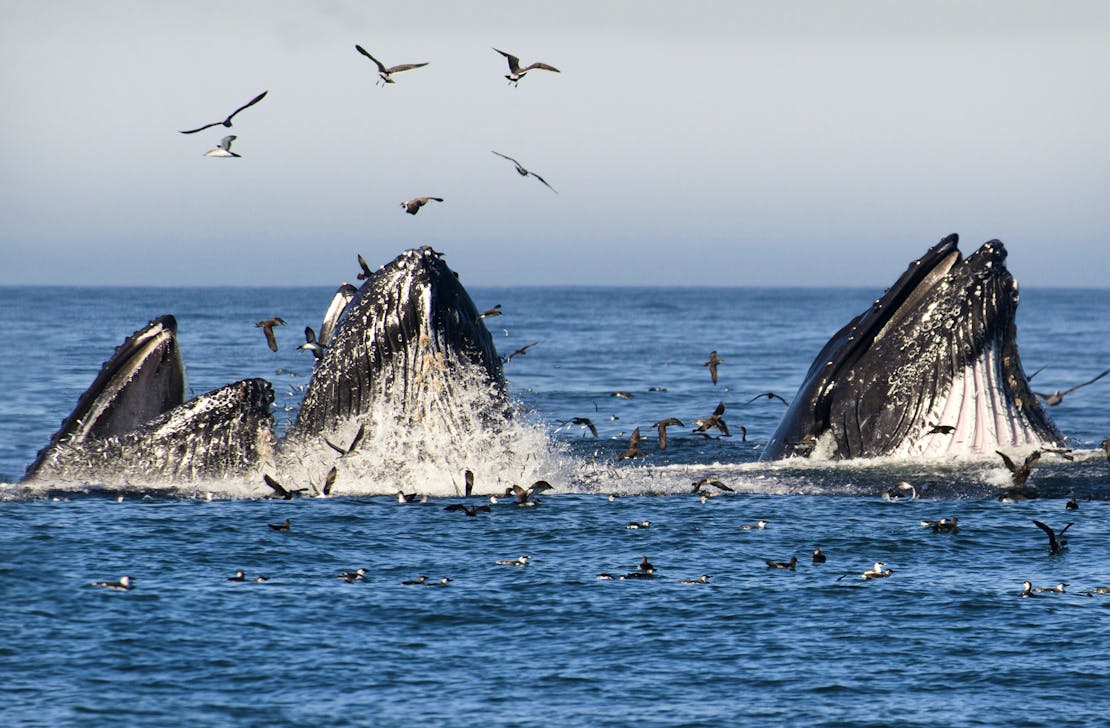The California program team of Defenders of Wildlife is excited to begin 2022 with momentum from a year chock-full of achievements. We advocated for wildlife across some of California’s most treasured landscapes, from the Pacific Ocean to the Sierra Nevada and the Central Valley to the Mojave Desert. Our work prioritized protection of imperiled species, including the southern sea otter, Sierra Nevada fisher, winter- and spring-run Chinook salmon, desert tortoise and bighorn sheep. Looking back, I’m so proud to be part of these efforts to protect wildlife across the Golden State. Here are just a few of the highlights.
Bay-Delta & Inland Valleys
Drought preparation and planning were at the crux of our work in the Bay-Delta and the Sacramento and San Joaquin valleys. Managing water for species, agriculture, urban use and everything in between is inherently contentious work, especially under severe drought conditions caused by compounding years of low precipitation. As a result, our work to ensure that migratory birds, the threatened giant garter snake and native fish species receive sufficient water to maintain their habitat and populations requires a multi-angle approach.
Over the past year, Defenders has collaborated with conservation partners, state agencies, legislators and private landowners to secure adequate water deliveries for key habitat areas, including wetlands, rice fields and tributaries. This work has included litigation to ensure that Bay-Delta managers are operating under an accurate understanding of endangered species in the area; seeking out potential new areas for protection under the National Wildlife Refuge System; advocating for responsible operation of Shasta Dam; and ensuring that compliance with water quality standards be mandatory rather than voluntary.
As we look ahead to 2022, we will continue working closely with fellow members of the Central Valley Joint Venture and other partners to advocate for creative and necessary solutions to water deficit in the California valley.
Desert
In the California desert region, our work this year ranged from suing the federal government to prevent disruptive pumping and transport of groundwater in the Mojave Desert to engaging with state agencies and our conservation partners to protect desert tortoise from threats presented by widespread off-highway vehicle use. We’ve also focused much of our attention on ensuring that new renewable energy projects are planned and executed with wildlife and habitat conservation in mind.
Over the last year, we’ve weighed in on renewable energy project proposals in Chuckwalla Valley, Antelope Valley and several other project sites in Kern, Riverside and San Bernardino counties to ensure that species like the threatened Swainson’s hawk will be adequately protected when new projects are built and operating. Defenders also successfully co-sponsored legislation this year to bring increased investments to the desert region. Assembly Bill 1183, authored by Assemblymember James C. Ramos, established the Desert Conservation Program under the state’s Wildlife Conservation Board. We look forward to working to ensure this new program is fully funded and continuing to lead the charge on other desert initiatives in the new year.
Ocean & Coast
Our advocacy for the protection of marine and coastal species focused on southern sea otter range expansion, decreasing the impact that recreation has on coastal wildlife and protecting whales and sea turtles from entanglement along the California coast. Hunted to near extinction in the 18th and 19th centuries, sea otters have since only been able to recover in a few isolated populations throughout their historical range.
In 2021, Defenders collaborated with conservation partners to assess the feasibility of reintroducing sea otters along the Pacific coast of the United States and Canada. We’ve been working to minimize barriers for sea otters by building awareness about the impact that human disturbance has on otters and partnering with other organizations, including the Southern Sea Otter Alliance, to facilitate information sharing and collaboration on sea otter recovery.
After many years of advocacy, our work to decrease recreational impact on coastal wildlife culminated in March, with the California Coastal Commission’s decision to phase out off-highway vehicle use in Oceano Dunes State Vehicular Recreation Area, which is largely protected under state and local law as an environmentally sensitive habitat area.
We have also focused on protecting migratory whales and sea turtles from entanglement by participating in the Dungeness Crab Fishing Gear Working Group. Dungeness fishing gear causes high levels of entanglement because the vertical lines stretch from seafloor to surface. Over the last year, we’ve been collaborating to pilot test ropeless gear that would substantially decrease the fishery’s impact.
We’ve also been carefully monitoring offshore wind energy development proposals along the California coast to ensure that this relatively new technology will be adopted with the least possible impact to marine mammals and seabirds.
Sierra Nevada & Cascadia
The year 2021 was an exciting and, at times, heartbreaking year for wolf recovery in California. As a member of the California Gray Wolf Working Group, Defenders followed along closely as famed Oregon wolf OR-93 made his way farther south in California than any other wolf in recent history. Although OR-93’s travels ended when he was lethally struck by a vehicle near I-5 in Kern County, his journey throughout the Sierra, across the Central Valley and into the Coast and Transverse ranges indicates that sufficient and suitable habitat exists to support increased wolf populations, something that Defenders has been working toward for decades.
Other Sierra Nevada species, like the fisher and California spotted owl also show signs of hope. In 2020, the southern Sierra Nevada fisher was listed as endangered under the federal Endangered Species Act, and this year Defenders and our allies submitted comments on what areas should be designated as critical habitat to ensure the fisher’s successful recovery over the long-term.
Progress for the critically imperiled California spotted owl also came late this year with the decision by the U.S. Fish and Wildlife Service (FWS) to reassess the species’ status. This decision stemmed from a lawsuit filed by Defenders and our conservation partners in which we posed that FWS’s failure to list the owl as endangered was not aligned with the agency’s own scientific analyses of the species’ status.
Statewide
At the forefront of our priorities was engaging in the planning phase of California’s “30 by 30” initiative. In October 2020, Gov. Gavin Newsom passed an executive order committing the state to a growing international movement to conserve 30 percent of land and waters by the year 2030. Last year, the state collected stakeholder input on how to define “conservation” for the purposes of this initiative, priority areas for conservation and other details on how best to meet this goal. Defenders attended regional workshops and engaged in many conversations regarding 30 by 30 implementation in the state to ensure that biodiversity, threatened and endangered species, and habitat needs are prioritized for conservation. Now that we’ve laid the groundwork, we’ll continue to advocate for the state’s most vulnerable species and landscapes.
In a year spent adjusting to the ever-evolving changes due to the COVID-19 pandemic, transitioning into a new federal administration and navigating the increasing pressures of the climate crisis, we are proud of the work we’ve been able to accomplish for wildlife in California, and we look forward to continuing the fight for wildlife protection across the state’s diverse landscapes in 2022 and beyond.












